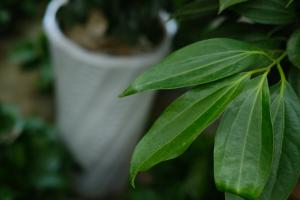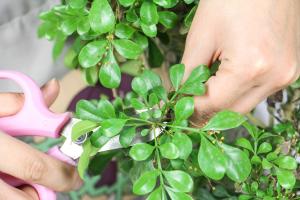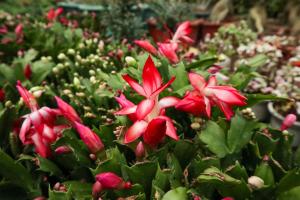How to Care for Arrowhead Plant
Arrowhead plant, also known by its scientific name Syngonium podophyllum, is a popular houseplant that is beloved for its attractive foliage and low-maintenance care requirements. This tropical plant is native to Central and South America and makes for a gorgeous addition to any indoor or outdoor space. If you're looking to add an arrowhead plant to your collection, here are some tips on how to care for it.
Light Requirements
Arrowhead plants need bright, indirect light to thrive. Direct sunlight can scorch their leaves, so it's best to place them near a north or east-facing window, where they will receive some sunlight in the morning or late afternoon. Similarly, if you're growing them outside, they should be placed in a spot where they will receive some shade during the hottest parts of the day.
Temperature and Humidity
Arrowhead plants are tropical plants, and as such, they thrive in warm, humid environments. They do well in temperatures ranging from 60 to 85 degrees Fahrenheit, and they prefer humidity levels of 50% or higher. To boost humidity levels, you can mist the plant regularly, place a humidifier nearby, or situate the pot on a tray filled with pebbles and water.
Watering and Soil
Arrowhead plants prefer evenly moist soil but are susceptible to root rot if overwatered. Water your plant when the top inch of soil feels dry to the touch, and be sure not to let it sit in water. Use well-draining soil that will allow excess water to flow out of the pot. You may also want to consider adding a layer of pebbles to the bottom of the pot to help with drainage.
Fertilizing
During the growing season (spring and summer), you can fertilize your arrowhead plant with a balanced liquid fertilizer every four to six weeks. During the winter months, you can reduce the frequency to once every two months. Be sure to follow the manufacturer's instructions carefully, as over-fertilizing can burn the plant's leaves.
Pruning and Repotting
Arrowhead plants can grow quite large if left to their own devices, so it's essential to prune them regularly to keep them at a manageable size. Use clean, sharp shears to trim back any leggy or overgrown branches. Additionally, if your plant has outgrown its pot, it may be time to repot it into a larger container. Repotting should be done in the spring, as the plant is starting to emerge from its dormant period.
Pests and Diseases
Arrowhead plants are generally hardy plants, but they are susceptible to a few pests and diseases. Spider mites and aphids can be a problem, as can fungal diseases like leaf spot and root rot. To prevent these problems, keep your plant's environment clean and humid, don't overwater, and keep an eye out for any signs of infestation or disease. If you notice any problems, take action immediately by using an insecticide or fungicide.
By following these care tips, your arrowhead plant should thrive and provide you with years of beauty and enjoyment. Remember to give it plenty of bright, indirect light, keep it warm and humid, water it carefully, fertilize it regularly, and prune and repot it as needed. With a little bit of care and attention, your arrowhead plant will be the envy of all your houseplant-loving friends.

 how many times do yo...
how many times do yo... how many planted tre...
how many planted tre... how many pine trees ...
how many pine trees ... how many pecan trees...
how many pecan trees... how many plants comp...
how many plants comp... how many plants can ...
how many plants can ... how many plants and ...
how many plants and ... how many pepper plan...
how many pepper plan...






























